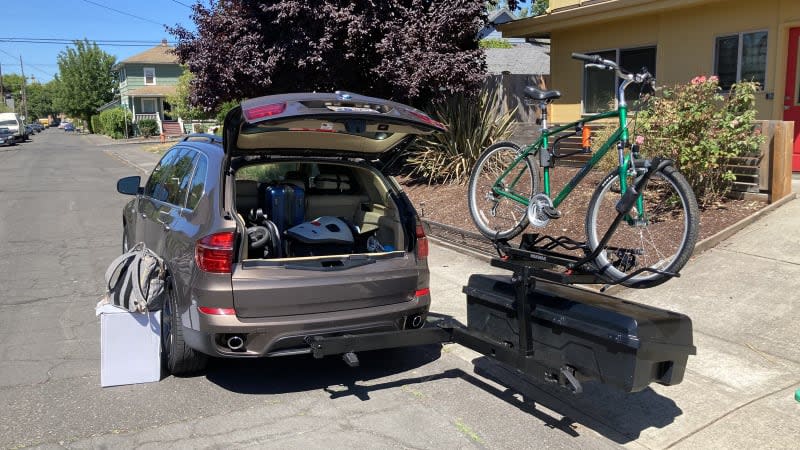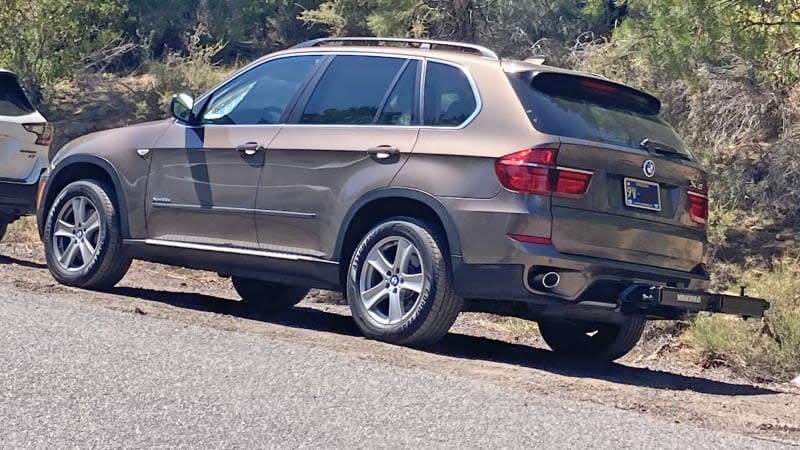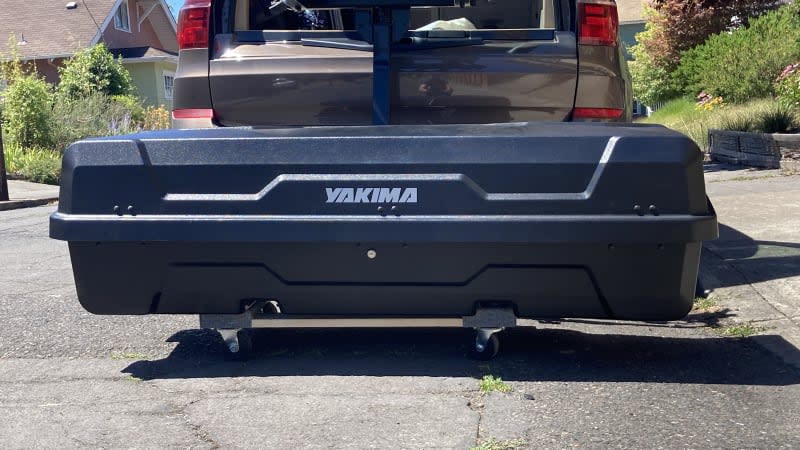Yakima Exo Review | Hitch-based cargo system is a game changer

Loading stuff onto the roof of a car isn't easy. An SUV makes it even harder and if you're on the short side of the human spectrum, then good luck, buddy. Using a roof carrier is still the easiest way to enhance your car's cargo capacity, and I did just that back in May when reviewing the Yakima Grand Tour 18 on my BMW X5. It did the job well, but the inherent issues with roof-mounted carriers, boxes and racks were obvious.
Enter the Yakima Exo system, the Oregon-based company's new customizable cargo solution that plugs into a standard 2-inch trailer hitch. It all starts with the Exo SwingBase. It's akin to a roof rack's crossbars as you need it for everything else to work. It connects to the hitch and performs three key duties. First, its two swing-out arms allow you to mount any of the various Exo racks and boxes to them. Second, it lets you mount the Exo TopShelf to it, which allows for the system's innovative two-tiered setup. And third, it lets you swing everything mounted out of the way so you can still access your vehicle's cargo area. Plus, when the racks or carriers are removed, it stays out of the way completely – there's little reason to remove it apart from aesthetics or beeping parking sensors.
There are multiple advantages to this concept. First, things mounted to a hitch are indeed much easier to access than those on a roof. Second, a hitch-based system can hold more weight, at 300 pounds, than a roof-mounted rack can, and is more easily swapped between vehicles. If it has a 2-inch hitch, it'll work. Third and fourth, there's the matter of aerodynamics and wind noise, as relocating carriers and racks from the roof to behind the car is beneficial for both.


I got a chance to test the Exo, once again putting my X5 to use as Autoblog's official outdoor adventure equipment guinea pig. Although I got a chance to install all the available Exo accessories while stopping by Yakima HQ (more on those later), the custom combination I would live with for two months would be the 10-cubic-foot GearLocker box mounted to the Swingbase and the DoubleUp two-bike rack mounted to the also-selected TopShelf.
Installing it requires more muscle than roof racks do. This is hefty metal equipment, so some care must be taken (just ask my shin and the tiny dent in the X5's tailgate), but once you know what you're doing, it's a much quicker install than roof racks. There's no need to make sure everything's symmetrical and correctly spaced, and there's only one thing to sufficiently tighten (with a big ol' manly wrench) rather than the four rack towers with two screws each. Additionally, it's more easily a one-person job – best of luck putting a roof carrier on by yourself.
Once the Swingbase is on, the Exo could not be easier to use. Just pop the pins to swing out each arm, which lock into place automatically. Then just glide the GearLocker onto the arms, turn the knobs to grip it in place, then lock them with the included key that can work for all Exo pieces. This is the same process for putting any of the attachments on the Exo arms, including when I put the DoubleUp bike rack on the TopShelf.


The other advantage to this system is that you can load the GearLocker inside the garage and place onto the Swingbase when it's full. That ain't happening with a roof-mounted box. When unloading, I just pulled the box onto a dolly from my garage (pictured above left), and wheeled the thing up the driveway to be unpacked later.
It's also worth noting that the GearWarrior open box attachment can be fitted with four WarriorWheels, which reduce the need for the separate dolly (pictured above right). Yakima does recommend removing them once on the Exo, but mounting the box does make that process easy enough as the wheels are floating free.
In terms of capacity, below is what I was able to fit inside the 10-cubic-foot GearLocker. Two duffle bags, a Guava portable crib and a whole bunch of shoes, games, toys and other loose stuff. Putting my usual allotment of Luggage Test suitcases cross-ways was not possible with the GearLocker, unlike the wider Yakima CBX and Grand Tour cargo boxes I previously tested. Some of those bags still could've fit inside, and the real-world capacity actually isn't all that different despite the cargo boxes having 16- or 18-cubic-foot capacities – a box is a more efficient space than an aerodynamic lozenge.

Besides making it easier to physically lift off and on, there was another, more important reason I selected the lightest bags and various loose items to stuff inside. While the Exo is rated at 300 pounds, I kept the heaviest items inside the cargo area and therefore over the X5's axle. Basically, it's a matter of physics: the less weight you have dangling off the back of your car the better. My decision was affirmed during the Hyundai Santa Cruz launch when vehicle development engineer Chahe Apelian warned upon seeing the above pictures, "that thing is going to change the way the car behaves." It's basically for the same reason that rear-engined cars, with their heavy engines hanging out beyond the rear axle, can be a tail-happy handful to drive.

 Yahoo Autos
Yahoo Autos 
